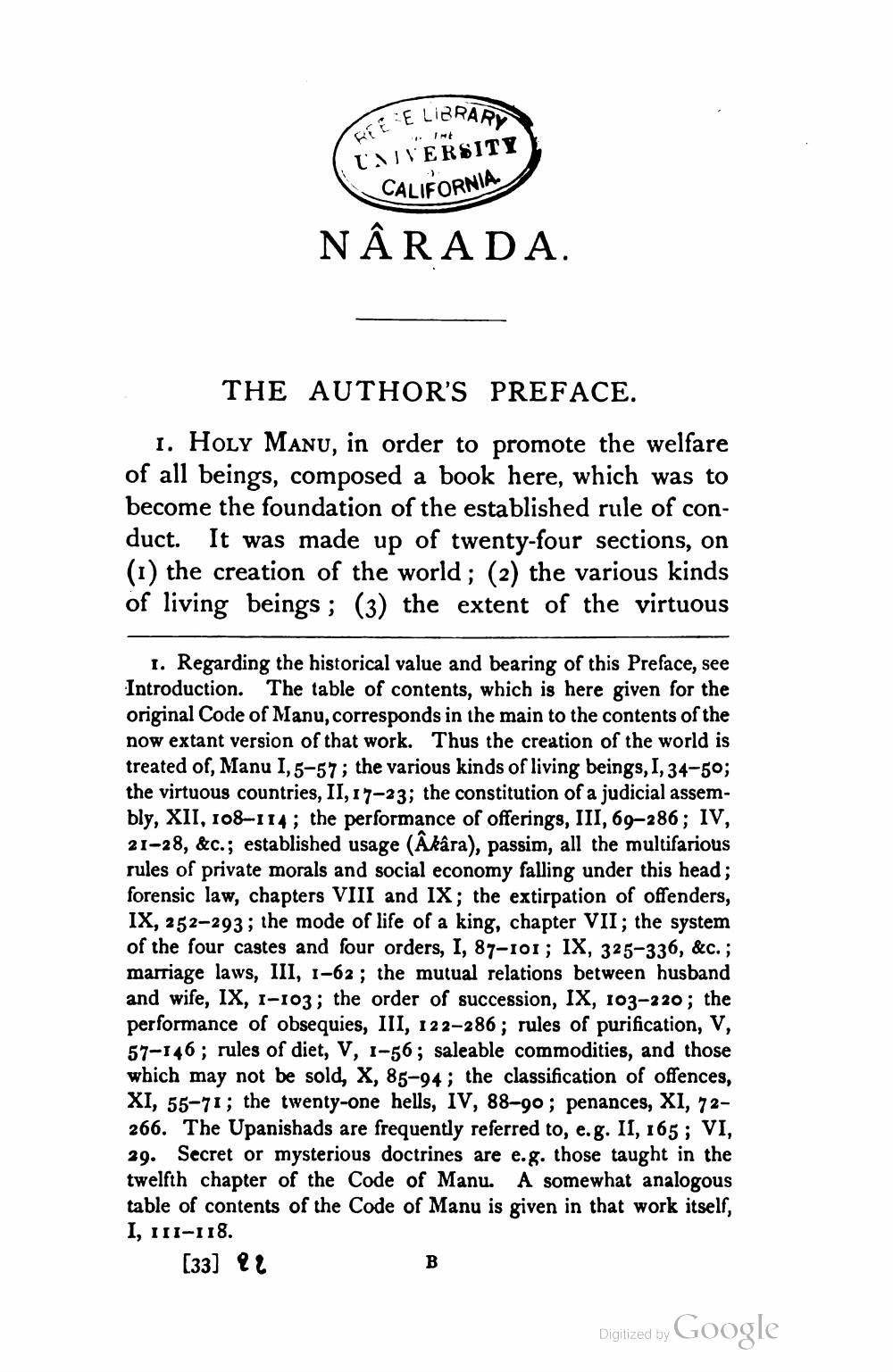________________
drEE LIBRARD L'INVERSITY
CALIFORNIA NÂRADA.
THE AUTHOR'S PREFACE. 1. Holy Manu, in order to promote the welfare of all beings, composed a book here, which was to become the foundation of the established rule of conduct. It was made up of twenty-four sections, on (1) the creation of the world; (2) the various kinds of living beings; (3) the extent of the virtuous
1. Regarding the historical value and bearing of this Preface, see Introduction. The table of contents, which is here given for the original Code of Manu, corresponds in the main to the contents of the now extant version of that work. Thus the creation of the world is treated of, Manu 1,5-57; the various kinds of living beings, I, 34-50; the virtuous countries, II, 17-23; the constitution of a judicial assembly, XII, 108–114; the performance of offerings, III, 69–286; IV, 21-28, &c.; established usage (Akâra), passim, all the multifarious rules of private morals and social economy falling under this head; forensic law, chapters VIII and IX; the extirpation of offenders, IX, 252–293; the mode of life of a king, chapter VII; the system of the four castes and four orders, I, 87-101; IX, 325-336, &c.; marriage laws, III, 162; the mutual relations between husband and wife, IX, 1-103; the order of succession, IX, 103-220; the performance of obsequies, III, 122–286; rules of purification, V, 57-146; rules of diet, V, 1-56; saleable commodities, and those which may not be sold, X, 85-94; the classification of offences, XI, 55-71; the twenty-one hells, IV, 88–90; penances, XI, 72266. The Upanishads are frequently referred to, e.g. II, 165; VI, 29. Secret or mysterious doctrines are e.g. those taught in the twelfth chapter of the Code of Manu. A somewhat analogous table of contents of the Code of Manu is given in that work itself, I, 111-118.
[33] 22
Digitized by Google




